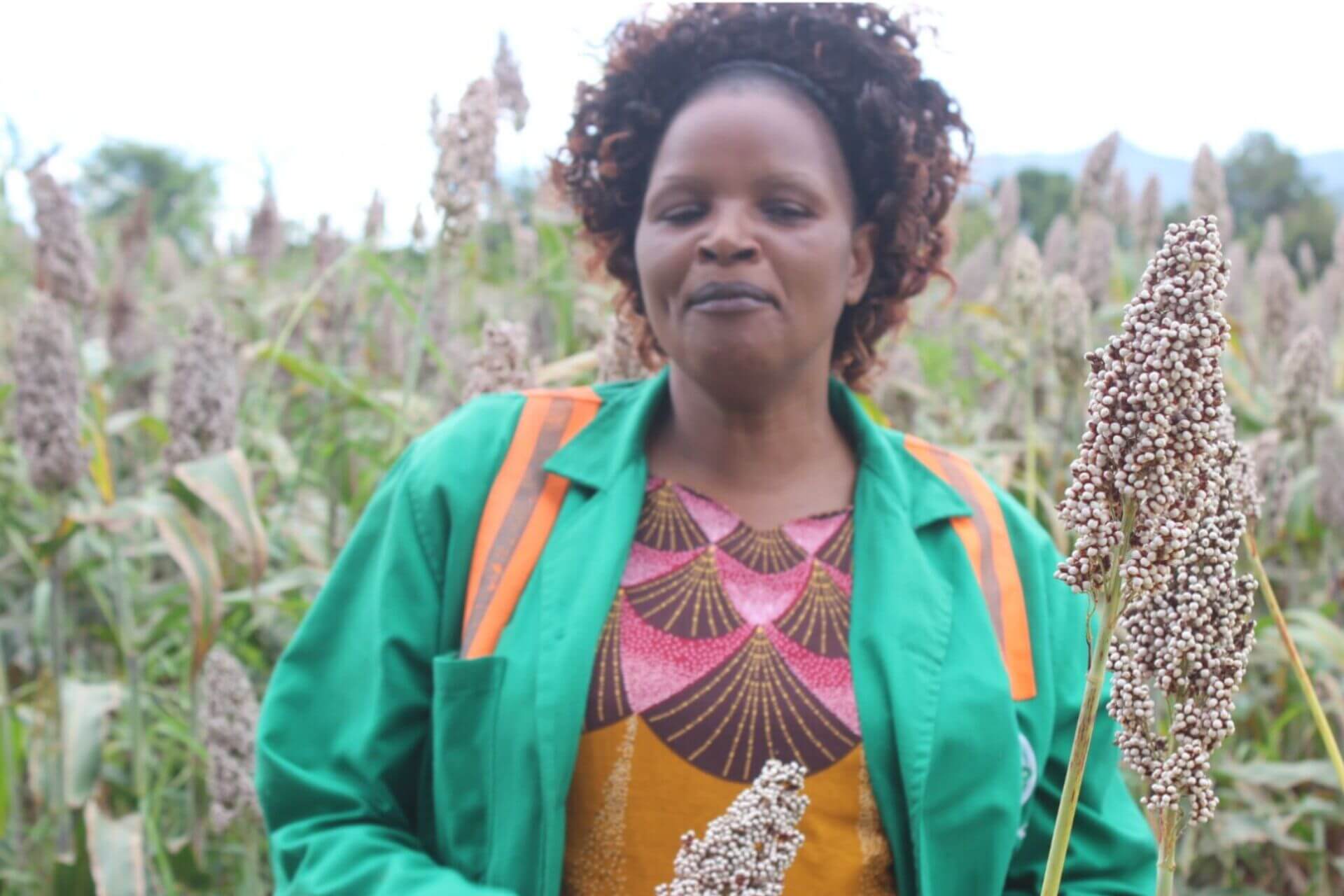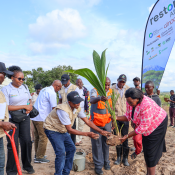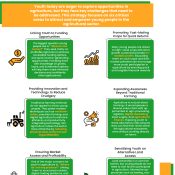
Sorghum Transforming Lives of Tharaka Nithi Farmers In Kenya
A brown-greyish hue glows in the late afternoon sun as sorghum stalks, laden with ripe grain, sag as if bowing to the wind that keeps them swaying in sublime unison. In a farm in Tharaka Nithi County in eastern Kenya, a motorised threshing mill hums incessantly as young men frantically feed bulky sorghum ears into its hollow metallic bowel to separate the grain from the chaff. Compared to the methods used in seasons passed, the mechanised thresher makes work light, filling sacks faster than the loaders.
The scene is replicated in many other farms in Mukothima Ward where sorghum farmers are bringing in their bounty harvest from their fields. In a one 3-acre farm near Mukothima town, Beatrice Nkatha guides her workers in loading stacked sacks of grain onto a pick-up truck. They will be transported to a collection point in the local town, about two kilometres away, from where larger commercial trucks will deliver the sorghum to the East African Breweries Ltd (EABL) depot in Nairobi.
Nkatha has become synonymous with the success of sorghum farming in the area. Fortunes for her and her neighbours have been changing for the better since Africa Harvest intervened 10 years ago to help the smallholder farmers improve their yields and find markets for their grain.
Nkatha has for that duration been organizing the aggregation of grains in Mukothima Ward, a move that has assisted her and fellow farmers find ready markets and get better earnings for their harvest.
With support from Africa Harvest, the development partner behind the successful commercialisation of sorghum farming in Tharaka Nithi since 2009, Nkatha has been mobilizing farmers to embrace the crop that has been improving food security and livelihoods in the area.
From Tailor to Aggregator.
Today the story of Tharaka Nithi sorghum farmers can be measured through the status of Nkatha, who manages one of the largest grain aggregation points in the county. From a smallholder farmer of meagre means, her life has transformed significantly. She owns 2 tractors, 2 threshing machines, an agrovet shop at Mukothima town and works with 15,000 sorghum farmers within the county.
Before Africa Harvest’s intervention, Nkatha had worked as a tailor for two years before quitting in 2007 to venture into grain bulking as a broker. “The tailoring job was not giving me much. I started buying grain from farmers and selling them to bigger buyers,” she says.
Before 2009, food insecurity plagued Mukothima and other areas of Tharaka Nithi owing to frequent droughts in the vast semi-arid expanse. Farmers who subsisted on maize, sorghum and other legumes were constantly frustrated by low yields and lack of ready markets.
Africa Harvest, determined to change the narrative, moved into the County to help break the cycle of hunger by introducing quality seeds, building farmers’ knowledge of good agronomic practices and linking them to markets.
Says Dr Florence Wambugu, the CEO of Africa Harvest: “Our goal was to disseminate improved varieties and breeds to the farmers to boost their yields. We wanted to help them make money throughout the entire sorghum value chain.”
Sorghum, which is drought-resistant and fast-maturing – taking only three months from planting to maturity – was the crop of preference in transforming the area. Most importantly, Africa Harvest had partnered with EABL to provide a ready market for the grain.
With the use of improved seed varieties, pesticides and fertilizer, the yields of farmers improved from 400 kg to 1.5 tons of sorghum per hectare. Based on her experience bulking grains as a broker, Africa Harvest engaged Nkatha to help farmers aggregate their produce.
A network of sorghum farmers aggregating their crop was formed, initially attracting just 40 farmers in 2009 but with 15,000 members under Nkatha’s network alone, sorghum has now become to the county what maize is to Trans-Nzoia County. Collectively, the farmers now produce between 8,000 to 10,000 tons of grain compared to 800 tons when they initially started.
As Nkatha attests, the profitability of the crop has also significantly improved. She says that prior to the introduction of the commercial sorghum farming program in 2009, a kilogram of grain retailed at Ksh 3 (US$ 0.03). The same year EABL started purchasing it at Ksh 17 and since then prices have gradually increased to Ksh 37.
In order to ensure the consistency of good yields, farmers are trained on good farming practices from the time of land preparation up until the crop is ready. These practices include the use of certified seeds of three improved varieties – namely Gadam, Sila and KARI Mtama 1 – that grow well in drylands, and application of fertilizers and pesticides to increase productivity. “The most important thing with this arrangement is delivering quality and large volumes, which means sourcing grains with no aflatoxins and with the appropriate moisture content,” says Dr. Wambugu.
Farmers adopt conservation agriculture practices involving minimal tillage and crop rotation, which not only increases yields but also ensures that crops survive even with minimal rainfall.
Once the crop is ready, farmers harvest their produce, deliver it to the aggregation point and are paid their dues immediately in cash or through banks, bank agents and MPESA – the mobile money transfer service. At the moment, the farmers have EABL as the only market, yet apart from beer production, sorghum is also processed into food and livestock feeds.



